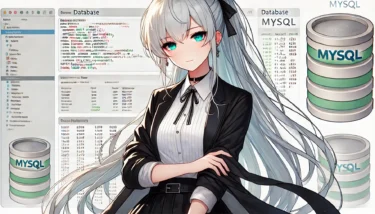目次
- 1 1. Introduction
- 2 2. How to View the User List in MariaDB
- 3 3. Detailed Management of MariaDB Users
- 4 4. Considerations for MariaDB User Management
- 5 5. FAQ (Frequently Asked Questions and Answers)
- 5.1 Q1: How do I grant permissions to only a specific user?
- 5.2 Q2: What are the causes and solutions when the user list does not display?
- 5.3 Q3: How to handle a locked root user?
- 5.4 Q4: I got an error when deleting a user. What should I do?
- 5.5 Q5: How can I save the output of SHOW GRANTS?
- 5.6 Summary
- 6 6. Summary
1. Introduction
MariaDB is one of the most widely used database management systems today, known for its ease of use and high performance. Among its features, user management plays a very important role. By handling user management properly, you can ensure database security and achieve efficient operation. In this article, we focus on how to view the list of users in MariaDB. Specifically, we’ll cover how to retrieve the user list using SQL commands, the differences and advantages of each command, and also provide detailed explanations of related permission settings and cautions. This guide is aimed at both MariaDB beginners and those already managing deployments, offering useful information. Please read through to the end.2. How to View the User List in MariaDB
There are several ways to view the user list in MariaDB. Each method has its own characteristics, and by choosing the appropriate one for your use case, you can manage users efficiently. Below, we will explain three representative methods in detail.2.1 How to Use the mysql.user Table
The most basic way to view user information in MariaDB is to query themysql.user table directly. This table stores all user account information.Command Example
You can view the user list by executing the following SQL.SELECT Host, User FROM mysql.user;Explanation
- Host: Represents the host name from which the user can connect.
- User: The user name registered in MariaDB.
Use Cases
- When you want to see a list of all users.
- When you want to identify users that can connect from a specific host.
Notes
- Querying the
mysql.usertable requires sufficient privileges (typicallyrootuser privileges). - Depending on the version, using
mysql.usermay be discouraged, so consult the official documentation.

2.2 How to Use the SHOW GRANTS Command
Using theSHOW GRANTS command, you can view the privileges granted to a specific user.Command Example
By specifying as follows, you can display the privileges of a particular user.SHOW GRANTS FOR 'username'@'hostname';Explanation
- You can examine each user’s privileges in detail.
- Example output:
GRANT ALL PRIVILEGES ON *.* TO 'user1'@'localhost';Use Cases
- When you want to verify that a user’s privilege settings are correct.
- To identify misconfigured privileges when an issue arises.
Notes
- If you lack sufficient privileges, you cannot execute this command.
2.3 How to Use information_schema.USER_PRIVILEGES
MariaDB includes a system database calledinformation_schema, and by using its USER_PRIVILEGES table you can list the privilege information for all users.Command Example
SELECT * FROM information_schema.USER_PRIVILEGES;Explanation
- This method lets you view each user’s global privileges.
- The output includes information such as:
- GRANTEE: The user name and host name.
- PRIVILEGE_TYPE: The type of privilege granted.
- IS_GRANTABLE: Whether the privilege can be granted to others.
Use Cases
- When you want to review privileges for multiple users at once.
- When you need to audit global privilege settings.
Notes
- Some privileges may not be visible in this table.
Summary
By using these methods appropriately, you can effectively manage MariaDB’s user list and privilege information. Each approach has its strengths, and selecting the right one based on your purpose is important.
3. Detailed Management of MariaDB Users
In MariaDB, you can view detailed user information and manage privileges. This section provides a detailed explanation of the operations required for user management.3.1 Checking User Information
In MariaDB, you can use theSHOW CREATE USER command to view detailed information for a specific user. This command reproduces the information used when the user was created.Command Example
Executing the following SQL displays the details of the specified user.SHOW CREATE USER 'username'@'hostname';Explanation
This command is used to verify a user’s authentication method and other attributes. Example output:CREATE USER 'user1'@'localhost' IDENTIFIED VIA mysql_native_password USING '***';Use Cases
- When you want to check a user’s authentication method.
- When you need to scrutinize user attributes for issues.
Cautions
- Executing the command requires appropriate privileges (typically
rootuser privileges).
3.2 Setting and Modifying User Privileges
In MariaDB, you can flexibly set privileges for each user. Privilege management uses theGRANT and REVOKE commands.Granting Privileges
The following SQL grants specific privileges to the specified user.GRANT SELECT, INSERT ON database_name.* TO 'username'@'hostname';Revoking Privileges
To remove unnecessary privileges, use theREVOKE command.REVOKE INSERT ON database_name.* FROM 'username'@'hostname';Explanation
- The
GRANTcommand can assign operation privileges on specific databases or tables. - The
REVOKEcommand can cancel privileges that are no longer needed.
Use Cases
- When setting specific privileges for a new user.
- When removing unnecessary privileges to strengthen security.
Cautions
- Misconfiguring privileges can increase security risks, so handle them carefully.
3.3 Deleting Users
Deleting unnecessary users can improve database security. Use theDROP USER command to remove a user.Command Example
The following SQL deletes the specified user.DROP USER 'username'@'hostname';Explanation
- When a user is deleted, all privileges granted to that user are also removed.
- There is no output example; on success, a “Query OK” message is displayed.
Use Cases
- When completely removing an unnecessary user from the database.
- When cleaning up unused accounts for security reasons.
Cautions
- If the user being deleted is currently in use, unintended errors may occur.
- User deletion is irreversible, so verify thoroughly before executing.
Summary
User management in MariaDB is essential for enhancing security and operational efficiency. By properly performing tasks such as reviewing user information, setting or modifying privileges, and deleting unnecessary users, you can achieve safe and efficient database operation.
4. Considerations for MariaDB User Management
To properly manage MariaDB users, you need to pay attention to several key points. This section explains how to address insufficient privileges, security considerations, and version‑specific differences.4.1 How to Address Insufficient Privileges
Checking the user list and privileges in MariaDB? Actually: Checking the user list and privileges in MariaDB requires sufficient privileges. If operations fail due to insufficient privileges, you can try the following solutions.Error Example
You may see an error like the following:ERROR 1045 (28000): Access denied for user 'user1'@'localhost'Solutions
- Verify that you are logged in as the correct user
- If the required privileges (e.g.,
SELECTprivilege) are missing, you cannot query themysql.usertable. - As a remedy, try logging in as the root user.
- Log in as the root user
- Logging in as root allows you to perform most operations:
bash mysql -u root -p
- Reset privileges
- Grant the necessary privileges:
sql GRANT ALL PRIVILEGES ON *.* TO 'username'@'hostname'; FLUSH PRIVILEGES;
Cautions
- Be careful not to grant more privileges than needed. Excessive rights pose a security risk.
4.2 Security Considerations
In MariaDB user management, security is the top priority. Below are the points you should watch out for.Remove Unused Users
- Leaving unused user accounts unattended can make them targets for attacks.
- Regularly review users and delete unnecessary accounts:
DROP USER 'username'@'hostname';Strong Password Policy
- When creating a user, set a password that is hard to guess:
CREATE USER 'user1'@'localhost' IDENTIFIED BY 'StrongPassword123!';Restrict External Access
- Limit the hosts that can connect to prevent unnecessary external connections:
- … actually code block remains unchanged:
CREATE USER 'user1'@'192.168.0.1' IDENTIFIED BY 'password';
Log Monitoring
- Regularly monitor MariaDB logs (e.g.,
general_loganderror_log) to check for unauthorized access.
4.3 Differences by Version
Because MariaDB’s behavior varies by version, you need to handle it appropriately for the version you’re using.Deprecation of the mysql.user Table
- In newer versions, directly querying the
mysql.usertable may be deprecated. In such cases, useSHOW GRANTSor theinformation_schemainstead.
Authentication Plugins
- In MariaDB, the default authentication plugin varies by version. Older versions typically use
mysql_native_password, while newer versions recommend the more securecaching_sha2_password.
Actions
- Check your MariaDB version:
SELECT VERSION();- Refer to the official documentation for your version and review the latest best practices.
Summary
Understanding the pitfalls of MariaDB user management helps you strengthen security and achieve efficient operation. Pay attention to insufficient privileges and version differences, and adopt the latest security measures.
5. FAQ (Frequently Asked Questions and Answers)
We have compiled common questions and answers about MariaDB user management below. This section addresses frequent concerns such as permission settings, error handling, and root user issues.Q1: How do I grant permissions to only a specific user?
Answer
You can use theGRANT command to assign the necessary privileges to a specific user. Below is an example that grants SELECT and INSERT privileges on a particular database:GRANT SELECT, INSERT ON database_name.* TO 'username'@'hostname';
FLUSH PRIVILEGES;Key Points
- Specifying
database_name.*applies the privileges to all tables within that database. - Running
FLUSH PRIVILEGES;ensures the changes take effect.
Q2: What are the causes and solutions when the user list does not display?
Answer
If you cannot view the user list, the following reasons may apply.- Insufficient privileges
- If the required privileges (e.g.,
SELECT) are missing, you cannot query themysql.usertable. - As a remedy, log in as the root user and try the operation.
- Using the appropriate command
- In newer MariaDB versions,
mysql.usermay be deprecated. In that case, use the following command:SELECT User, Host FROM information_schema.USER_PRIVILEGES;
- Check MariaDB version
- Since recommended methods can vary by version, first check your current version:
SELECT VERSION();
Q3: How to handle a locked root user?
Answer
If the root user is locked and you cannot log in, follow these steps.- Start MariaDB in safe mode
- Stop the server and restart it in safe mode:
bash mysqld_safe --skip-grant-tables &
- Reset the root password
- While in safe mode, log in to MariaDB and reset the root password with:
UPDATE mysql.user SET Password=PASSWORD('new_password') WHERE User='root'; FLUSH PRIVILEGES;
- Exit safe mode and restart in normal mode
- Restart MariaDB to return to normal operation.
Caution
Because authentication is bypassed in safe mode, ensure that no unauthorized parties can access the server.Q4: I got an error when deleting a user. What should I do?
Answer
The following issues can cause errors when deleting a user.- The user to be deleted is currently in use
- If the user you are trying to delete is connected, the deletion will fail.
- As a remedy, forcefully terminate the user’s connections:
SHOW PROCESSLIST; KILL connection_id;
- Dependent objects exist
- If the user has associated objects (e.g., views or stored procedures), you must drop those first.
Q5: How can I save the output of SHOW GRANTS?
Answer
Saving the output ofSHOW GRANTS to a file lets you review the privileges later.- Saving to a file
- Use the
mysqlclient on the command line and redirect the output:bash mysql -u root -p -e "SHOW GRANTS FOR 'username'@'hostname';" > grants_output.txt
- Saving as SQL statements
- Save the output to a file so you can reuse the statements later.
Summary
The FAQ section addressed common questions about MariaDB user management. Using this information can help you troubleshoot issues and improve operational efficiency.6. Summary
User management in MariaDB is an essential element for improving security and operational efficiency. In this article, we provided a detailed explanation focusing on how to view the user list, as well as permission settings, cautions, and frequently asked questions with their solutions.
Key Points
- How to View the User List
- By leveraging the
mysql.usertable,SHOW GRANTS, andinformation_schema.USER_PRIVILEGES, you can effectively view user information.
- Detailed User Management
- We learned how to view user information using
SHOW CREATE USER, manage permissions withGRANTandREVOKE, and remove unnecessary users.
- Cautions and Security Measures
- We covered the basics of security, such as solutions for insufficient privileges, setting strong passwords, and removing unnecessary users.
- It’s also important to know how to handle differences in specifications across versions.
- Frequently Asked Questions (FAQ)
- We presented concrete measures for common operational issues such as permission settings, error handling, and procedures to recover the root user.
Next Steps
- Use this article as a reference to check the user list and permissions in your own MariaDB environment.
- As a security measure, we recommend regularly reviewing user and permission management.



